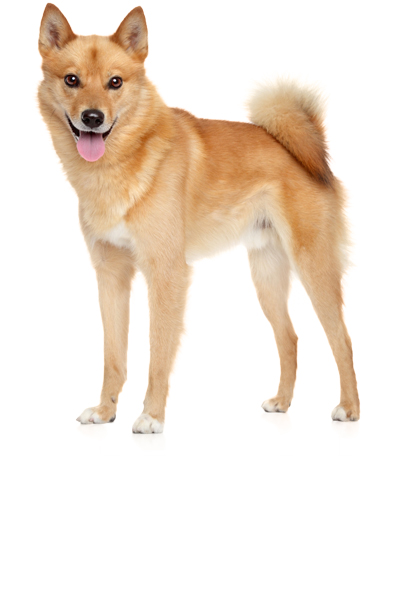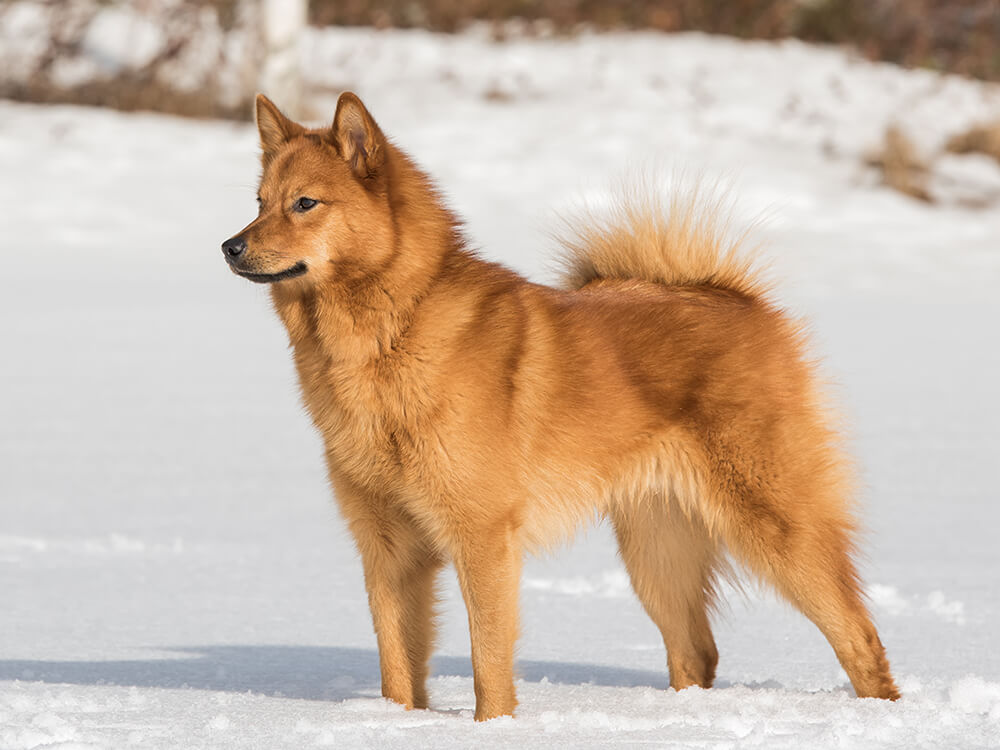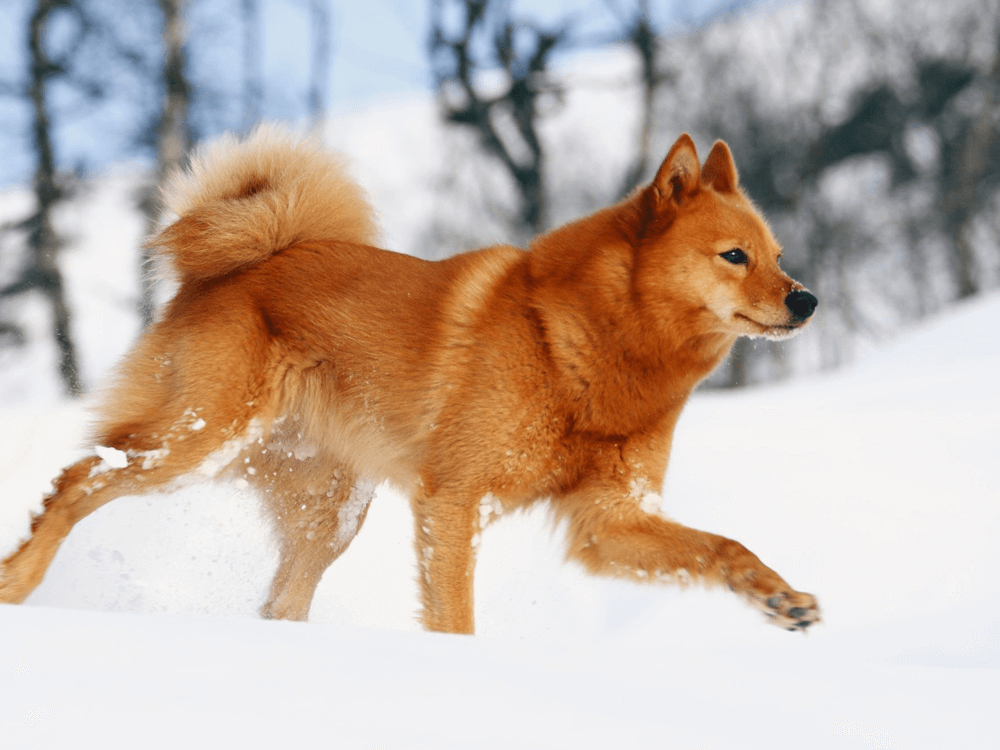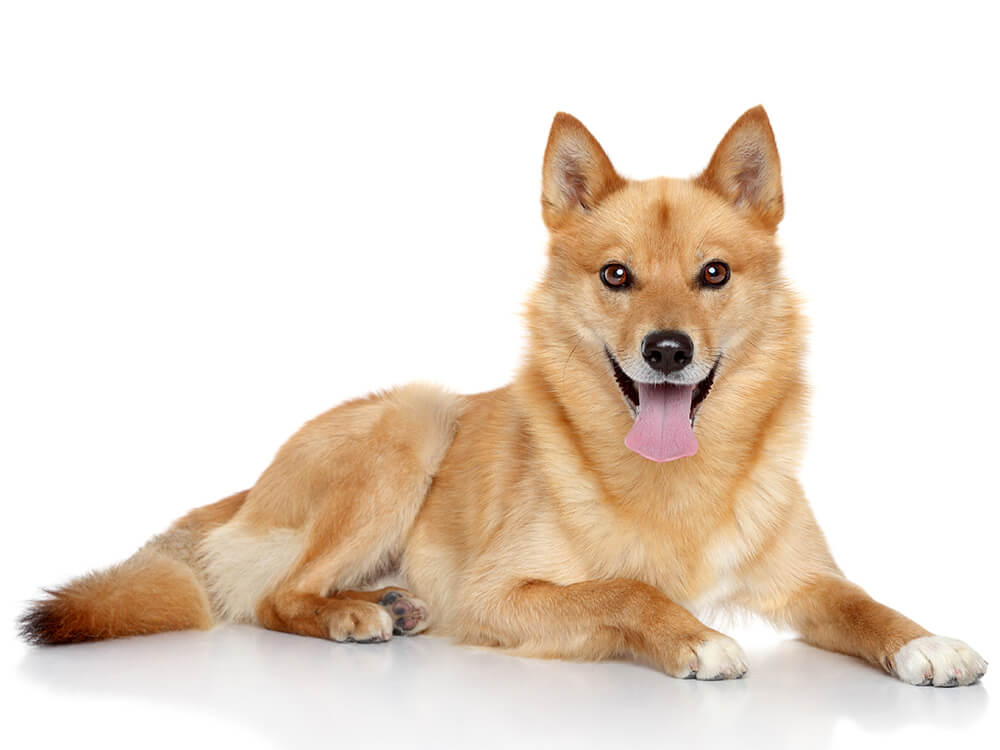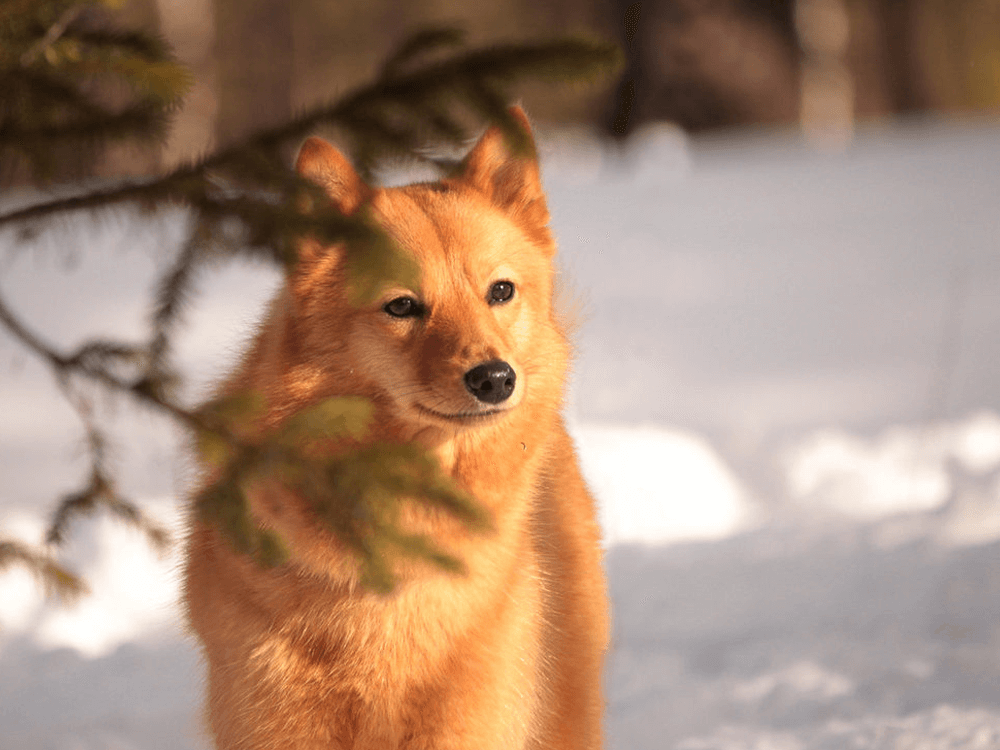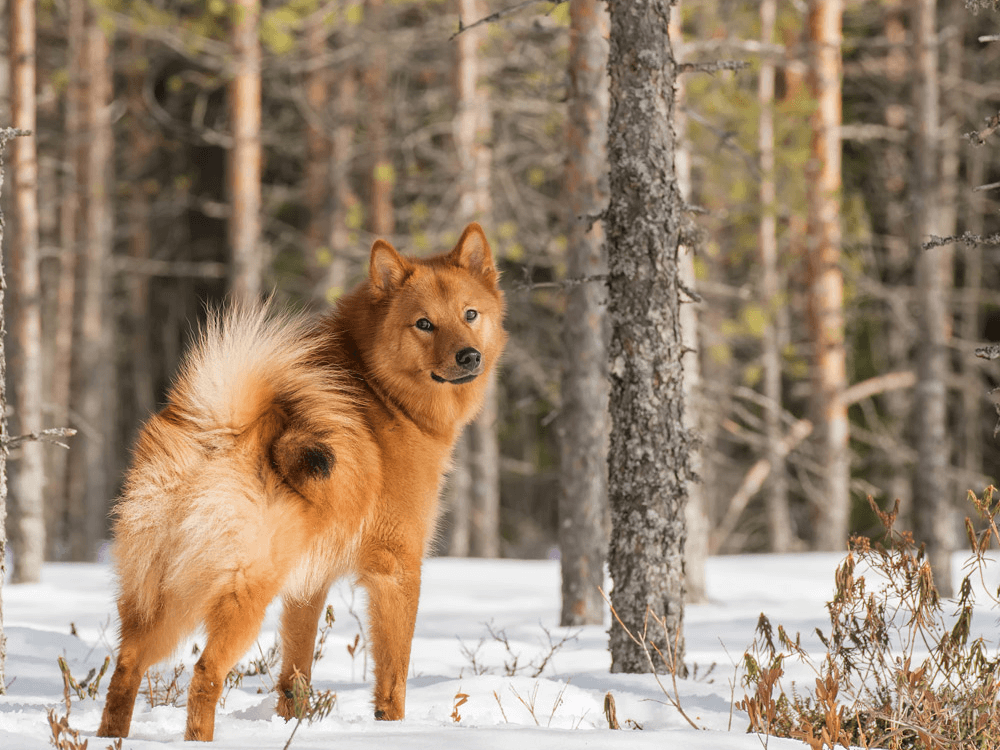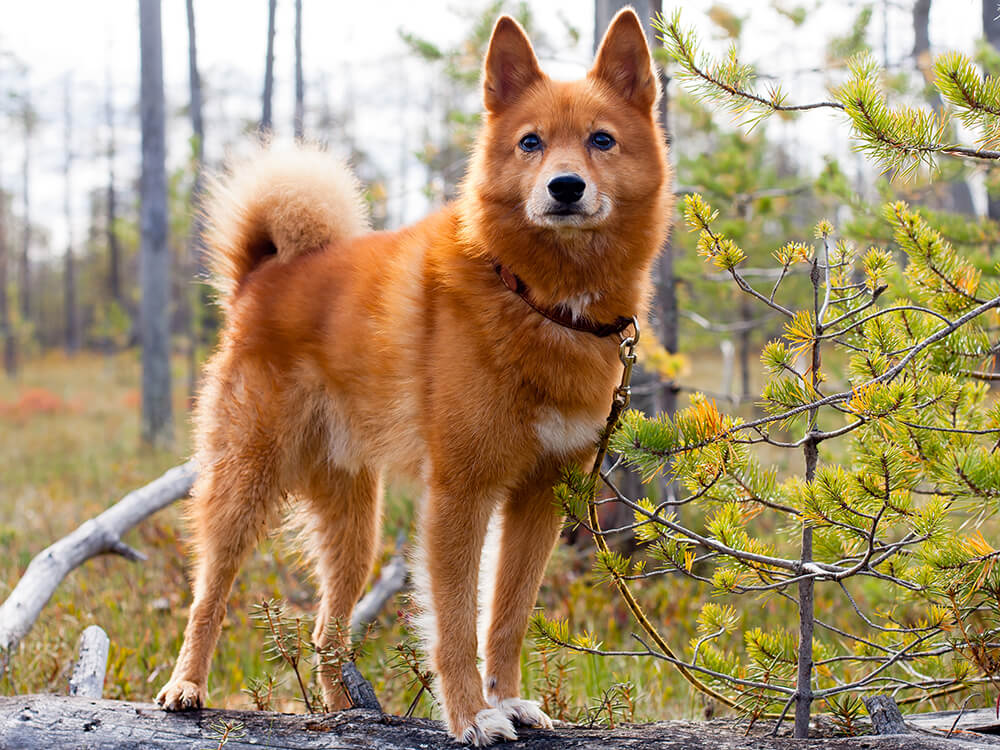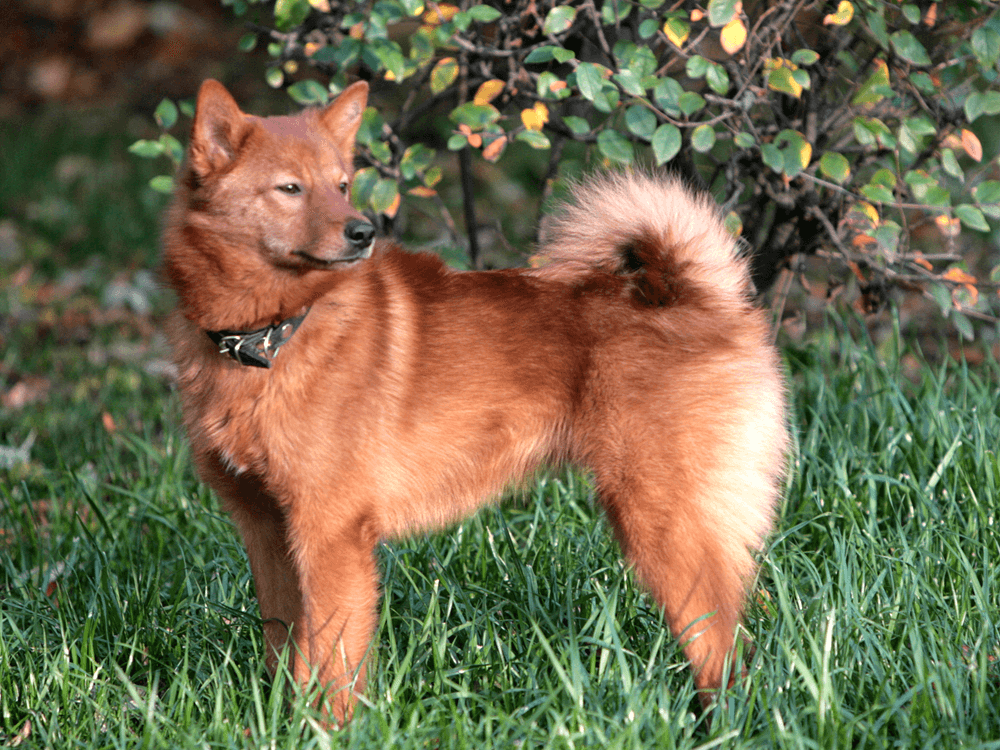
Finnish Spitz Breed Pictures
Vital Breed Stats
| Height: | 38 - 51 cm M | 38 - 51 cm F |
| Weight: | 14 - 16 kg M | 14 - 16 kg F |
| Breed Group: | Toy Dog Group |
| Life Expectancy: | 13 - 15 years |
| KC Registered: | No |
Breed Characteristics
| Size: |  |
| Grooming: |  |
| Exercise Level: |  |
| Trainability: |  |
| Barking Level: |  |
| Good with Children: |  |
| Good with other pets: |  |
| Affectionate: |  |
| Protective: |  |
| Cost to Keep: |  |
Give a thumbs up if you love the Finnish Spitz

0
More About the Breed
History
The Finnish Spitz originated in Finland and has been around for thousands of years. Although much of its history is undocumented, it is believed that the breed was brought from Central Russia to Finland by the Finno-Ugrian tribes when they migrated. Primarily used as an all-purpose hunting dog, the Finnish Spitz is widely known as the "bark pointer," indicating the location of live game by barking.
By 1880, the advanced transportation brought people to where the Finnish Spitz lived, bringing with them their dogs. Most of the Finnish Spitz was bred with other dog breeds and almost drove the original breed to extinction. In 1890, Hugo Sandberg and Hugo Roos from Helsinki witnessed the efficient skills of the Finnish Spitz during one of their hunting trips. From then on, they were determined to save the breed.
The Finnish Kennel Club first recognised the breed in 1892 utilising Hugo Sandberg's apt description of the Finnish Spitz as the breed standard. The Finnish Spitz has become widely popular in Finland and Sweden and has established itself as the national dog of Finland since 1979.
Appearance
Based on accepted breed standards, Finnish Spitz must have a square build, meaning it is slightly shorter in length than it is in height. It stands 38 to 51 centimetres at the withers and weighs 20 to 35 pounds. With its fox-like appearance, the breed has pointed muzzles, red coats and pricked ears. Nose, lips and rims of the eyes are coloured black.
Sporting a double coat, the Finnish Spitz has a soft, dense undercoat, and a long, harsh guard hair as a topcoat. Its head wear short tight hair, whereas the hair in the body and back of their legs is slightly longer. Stiff, harsh coat can be found on its neck up to its back. There are only two accepted breed colours that contribute to its foxy appearance, and those are red and gold.
Grooming
Grooming a Finnish Spitz can be a bit challenging especially in keeping its coat clean and pristine-looking. It does not help that it sheds quite heavily throughout the year, which requires daily brushing to remove any loose and dead hair.
Aside from making sure the coat is tidy and skin looking good, it is also necessary to pay attention to other parts of its physical well-being. When too much wax build up in the ears, this makes the dog breed susceptible to infections. Cleaning the ears on a regular basis using a vet-approved solution will prevent bacteria from growing in its ear canals. Brushing of teeth at least twice a week is also essential to keep gum disease and bad breath at bay. We must not forget to trim the nails. Untrimmed nails can lead to overgrowth, cracking and splitting, which will be painful for any dog breed.
Temperament
Intelligence
Since the Finnish Spitz is a hunting dog, it has an inherent need to be outdoors to do rigorous activities such as running and hiking. With this said, active families who engage in outdoor activities are perfect for this breed. Barking is one of the Finnish Spitz specialities since it was originally bred to be "bark pointers." So if you have pesky neighbours who do not like dogs that bark a lot, then either you move or skip getting a Finnish Spitz altogether. However, another alternative is to train this breed to control its excessive barking tendencies.
The Finnish Spitz is intelligent and often has a stubborn and independent streak, making training difficult. It is crucial that this dog breed understands who the leader is. Once leadership is established, you will have already won half the fight for making this breed obey. Needless to say, every dog breed is unique and may exhibit a different temperament. Socialisation and training, as well as the environment will largely contribute to shaping its personality and behaviour.
Nutrition
- Senior and less active: up to 690 calories daily
- Typical adults: up to 780 calories daily
- Physically active/working dogs: up to 865 calories daily
Feeding
Health
Exercise
Cost of Ownership
Since only a few puppies are registered with The Kennel Club every year, buying a Finnish Spitz means going on a waitlist. However, you have more time to get enough funds for its purchase and to care for it. For instance, you can set aside £700 to £1,000 to buy a Finnish Spitz puppy once it becomes available. Other costs to prepare for are as follows:
- Pet Insurance - £20 to £40 per month (depends on the level of coverage)
- Dog supplies and equipment - £200 (initial purchase)
- Quality dog food - £30 to £40 a month
- Veterinary Fees - £900 a year (including vaccines, boosters and neutering)
Is a Finnish Spitz Right for You?
- The Finnish Spitz is a happy and easy-going dog breed.
- It is extremely protective and fiercely loyal – a great guard dog.
- The breed is a hound dog that requires at least 40 to 60 minutes of exercise daily.
- It has a dense coat that needs daily brushing.
- Only a few puppies are registered yearly, so one has to go on a waitlist to purchase it.
